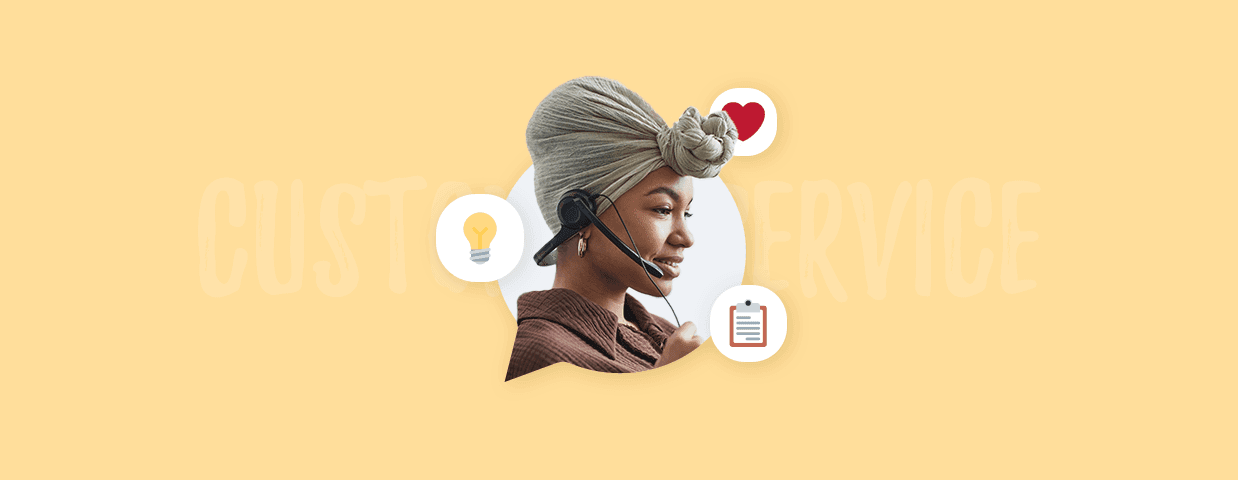I have a confession to make.
I’m a notorious window shopper. I love browsing through products, and my decision process is usually very long.
But—
As soon as a shopping assistant asks if they can help me, I know that I’m done for.
After chatting with them, I feel obliged to buy something out of sheer gratitude. And this is the true power of proactive customer service.
It makes customers spend more and thank you for it. On top of that, proactive sales and service techniques work online too.
Get more customer interactions with a free live chat tool
Now, let’s start with the proactive service definition.
What is the proactive approach to customer service?
Proactive customer service means anticipating customer expectations and making the first move. Instead of waiting for the customers to reach out, agents take initiative on their own. This approach increases the quality of customer experiences and maximizes engagement.
In simple words, it is all about fixing problems even before customers know that they have them.
Restaurants are a type of business that offers proactive customer service by default. The waiter approaches you, asks about your order, and helps you decide what to choose.
It may all sound straightforward. But surely this is not the best option for all industries, is it? People hate being nagged about products or services!
Actually, 87% of US consumers want to be contacted proactively by companies.
What’s worth noting is that this type of service is being adopted by all sorts of businesses. Thanks to technology, even ecommerce stores use the proactive approach now.
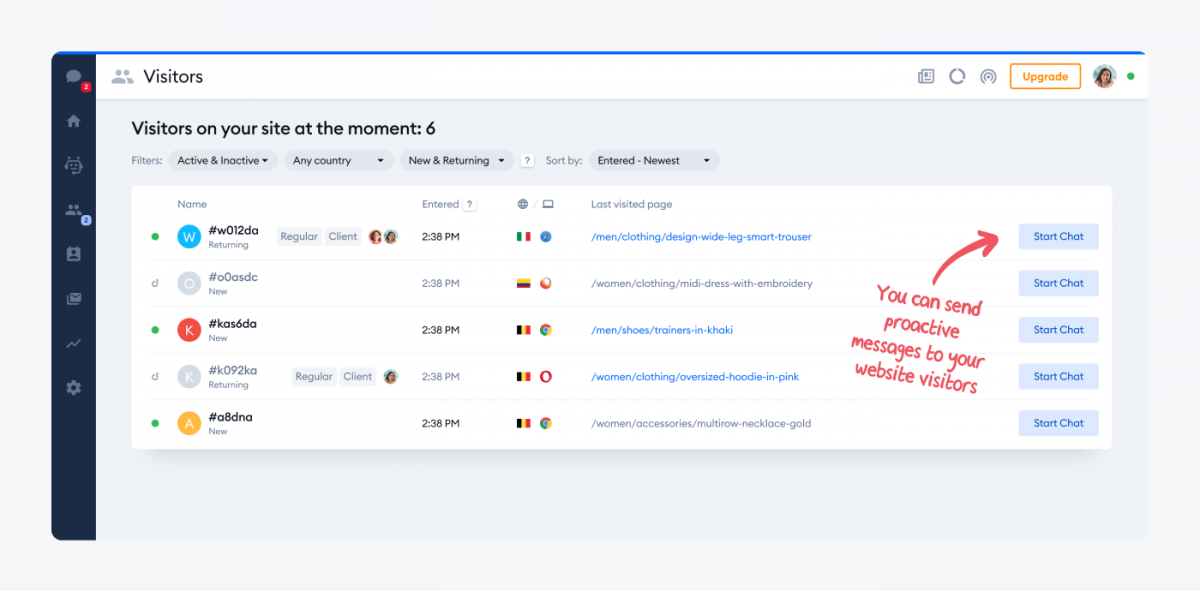
When online shoppers browse through products, a customer support agent can monitor their behavior and offer them assistance. When they are struggling with something, someone from the support team can start a chat and write them a message even before they ask for help.
The easiest way to understand this approach is to compare it with reactive customer service.
Proactive vs reactive customer service: comparison
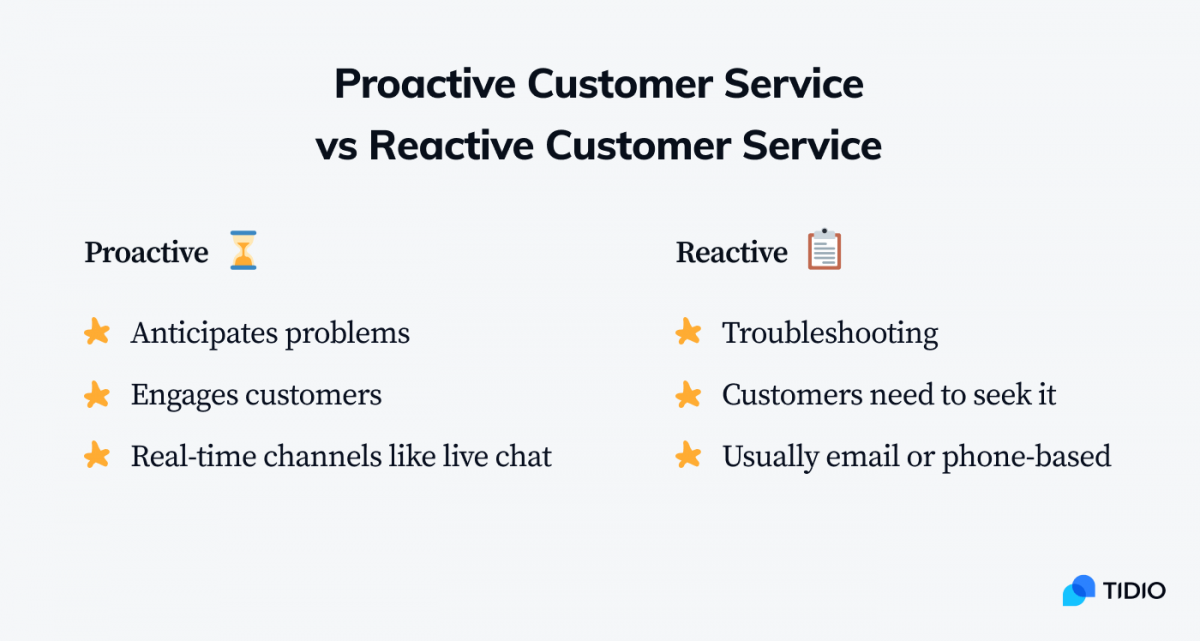
Proactive customer service:
- Is a part of the customer-centric approach
- Delivered through real-time support channels such as live chat
- Increases customer satisfaction by offering a more personal approach
- Helps to identify customer pain points
- Allows agents to resolve issues faster
- Reduces customer churn
Reactive customer service:
- Traditional customer support that focuses only on customer complaints
- Delivered through channels such as email or phone
- Is frequently outsourced to external call centers
- Doesn’t focus on customers’ needs if they aren’t explicitly voiced
- Deals with customer issues rather than customer journey
- Solves problems but doesn’t gather extra feedback
Clearly, there are many advantages to proactive service.
As one of the customer experience experts puts it:
Shifting from reactive to proactive conversations is a game-changer, delivering nearly effortless experiences, reducing cost, and increasing customer lifetime value.

If you wonder how being proactive with customer service can help your company, here are some of the obvious pros.
Benefits of proactive customer service include:
- Building customer loyalty
- Better quality of interactions
- More customer feedback
- Fewer customer calls
So—
Are there any downsides?
Well, offering proactive customer support is a skill. It is not something that most people are born with. You will probably need regular customer service training sessions to hone those skills.
It is very important not to overdo it. We might think that we are being non-intrusive and polite, but the customer might feel cornered or even forced to make a purchase. Using customers' emotions and being too pushy is an easy way to lose them instead of making a sale.

Implementing the proactive customer service approach in your company can be difficult but let’s take a look at some inspiring examples.
Proactive customer service examples
How would you approach your customer service strategy in a proactive rather than reactive way?
This video is a great example of proactive customer service vs. reactive customer service:
The most important thing is to use active listening to stay committed to the conversation. The goal is to make the customer talk about his needs. Ask follow-up questions that they can answer in a straightforward manner. Take initiative, use your problem-solving skills, show empathy, and offer solutions to their problems.
But how to do it online?
Here are some easy steps and examples of proactive companies that use these techniques.
1. Engage website visitors
Good customer service starts with a nice welcome message. You should prepare a friendly greeting that also shows what options the customer has. Starting a conversation when someone doesn’t want it can drive them away.
A good compromise is an automated live chat message with buttons. You make the initial move and wait for their response. If they need it, they know how to reach out to you.
Chicago Music Exchange is a great example of a company that employs proactive assistance without being too pushy.
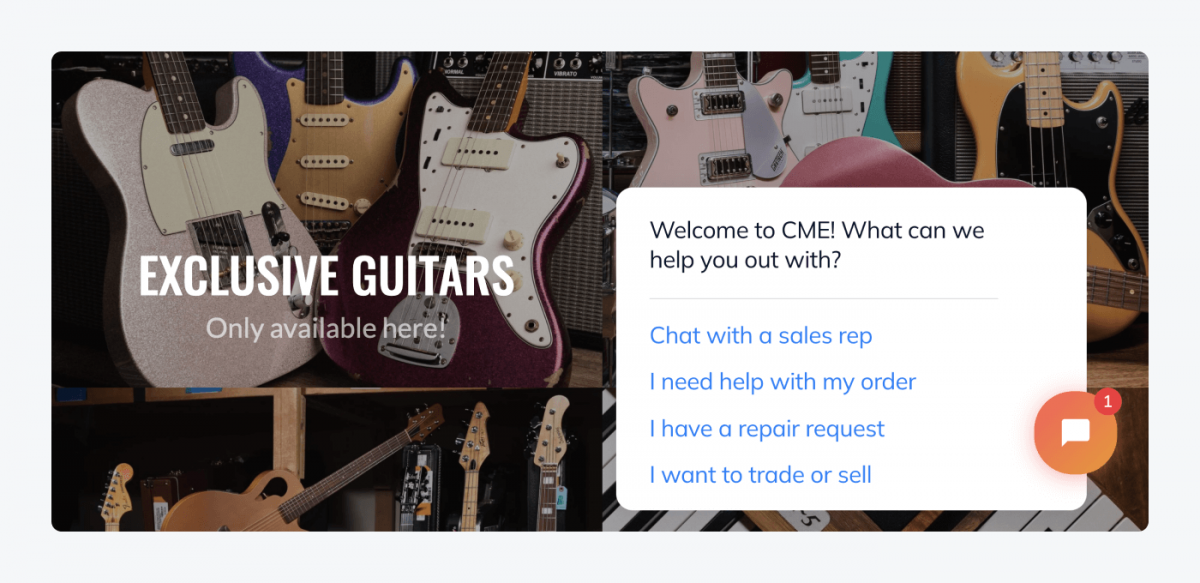
Customers visiting the site get the message right away and know that they can use the widget if they need to. They can also immediately start a conversation with a sales representative.
You can engage customers in very creative ways. See how Pooch Bandana uses automated messages in ways that match its brand identity.
2. Ask for feedback and collect information about your customers
Knowledge is power, and every successful business takes this seemingly obvious truth very seriously. Happy customers mean higher retention rates, and you cannot make someone happy if you don’t understand them.
Only 1 in 26 customers complains—the rest simply stops doing business with your company. To better understand your customer base, ask questions. Pay attention to what visitors do and how they behave. Send out surveys to find out their pain points. You can also use surveys to see if your website attracts the right people.
Nancy Anderson sends you a survey right off the bat. You enter her website, and you can immediately take a short test to see if her offer is for you or not.
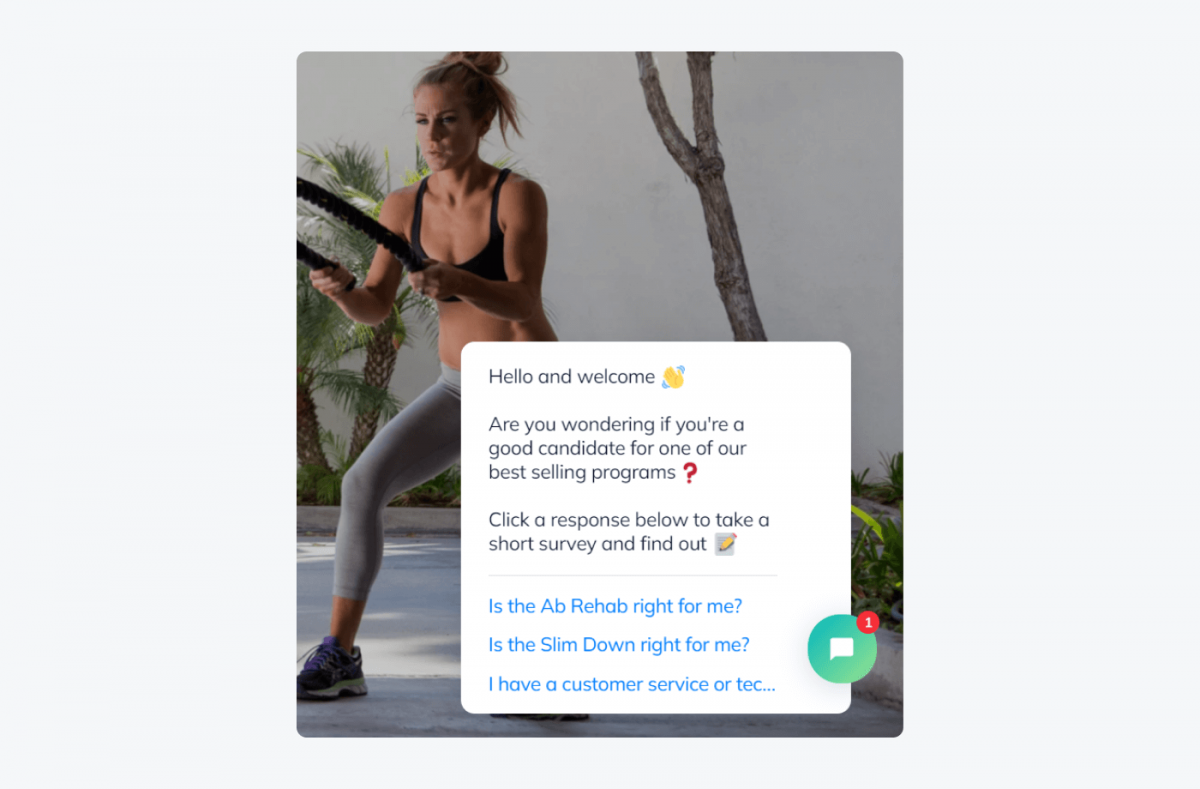
Instead of searching for information on a website, you can answer a few simple questions. Potential customers are immediately engaged in a conversation. The best part? It is a chatbot, so the whole process is fully automated.
If you want to have your own AI assistant, you can create your own chatbot from scratch. It is like having an extra agent in your customer service team.
3. Offer self-service tools such as a knowledge base
OK. This one sounds pretty weird. Doesn’t being proactive imply being active? We’re supposed to help customers, not refer them to the manual, right?
Sometimes the best thing you can do for a customer is to help them help themselves. Reactive customer service involves answering customer questions. But proactive customer care can be reduced to the bare minimum. Making the first move is what counts. That move can be showing users where they can find answers to their questions on their own.
Here is a good example of a FAQ bot powered by Tidio that comes from our very own website.
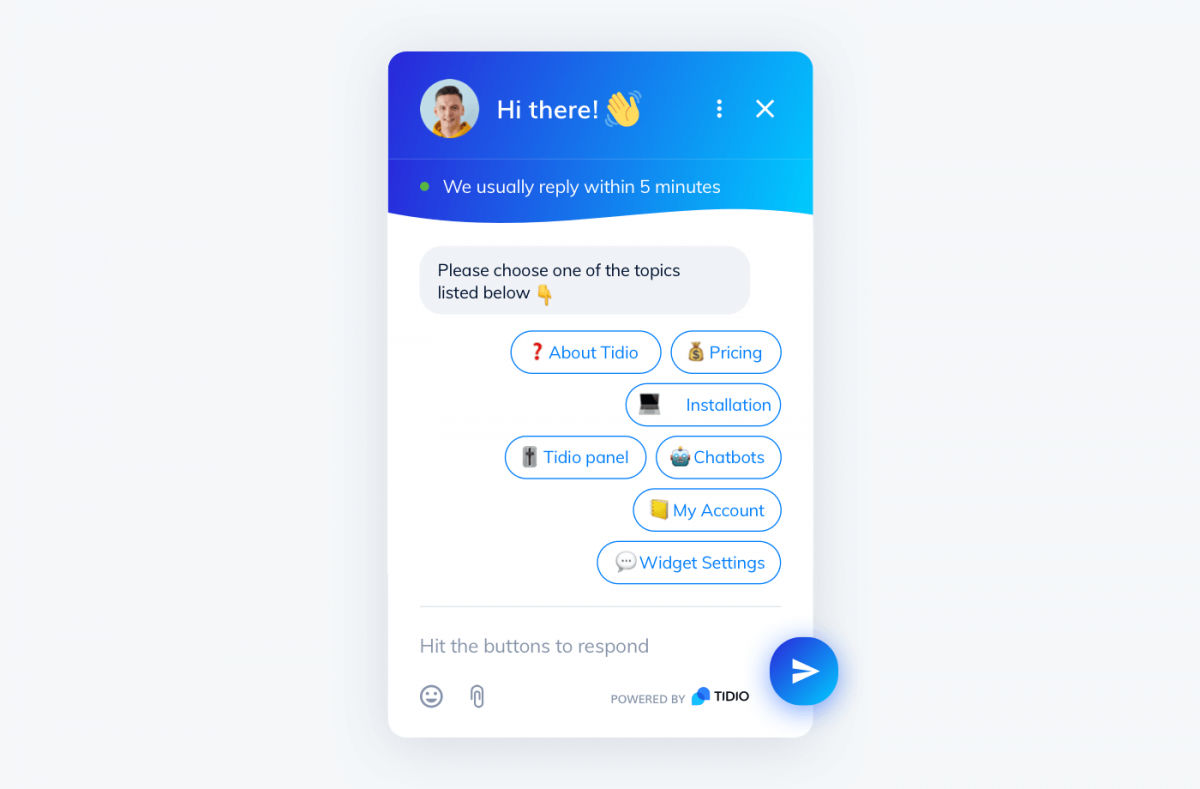
The topics you can ask the chatbot are based on the most common customer problems that our users inquire about.
Big companies with thousands of customers get far too many questions to answer every single one personally. We are a chatbot company, and it is quite natural that we decided to make one for ourselves. It gives us more time to handle only the most difficult and unusual problems.
Read more about chatbots:
- Chatbots for Business: 10 Reasons Why You Need Them
- Best Free Chatbot Platforms Compared
- Chatbot Design: Best Practices
4. Communicate via newsletters
As a great man once said, there is only one thing in the world worse than being talked about, and that is not being talked about.
It might seem that customers don’t like to be bothered. But one thing they hate even more is being ignored and kept out of the loop. Need an excuse to get in touch with your customers? Apparently, about 20% of customers think that informing them about new features of a product or service is the best reason for proactive service.
Capture One is an example of a very proactive company. They send regular newsletters about every update and special offer.
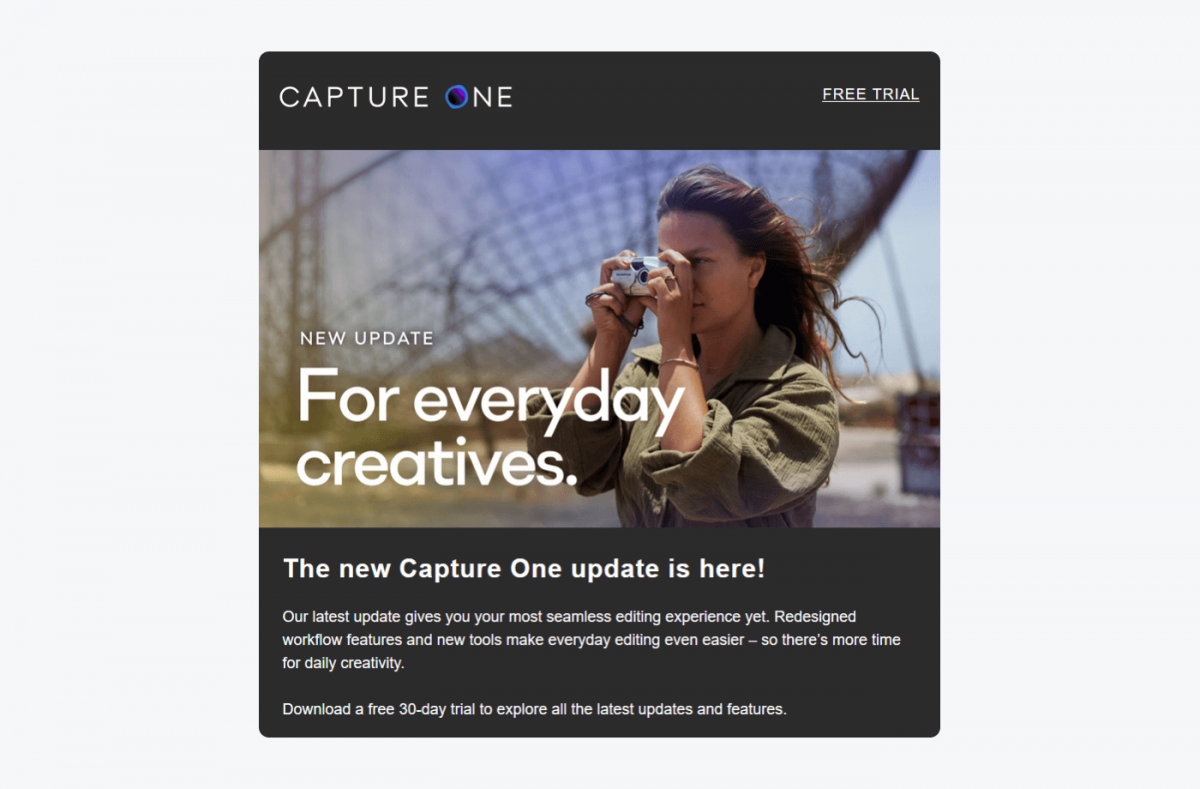
Whenever your product changes, it’s a good idea to let your customers know and gather their feedback.
Starting your own newsletter is extremely easy, and you can do it right away for free. You can find some amazing newsletter and email marketing templates for different occasions here.
5. Give your customers a little push in the right direction
Running from store to store is a tiresome business. But switching between different browser windows isn’t. That’s why online shoppers are quite used to comparing prices. This is especially true with Gen Z customers. According to our customer experience study, almost 45% of young shoppers cross-reference prices to find the best deal.
When customers are hesitant, you should be proactive and take matters into your own hands. A discount code or a product recommendation may just do the trick. Here is an example of a proactive discount offer from One of a Kind—a streetwear and sneaker retail shop.
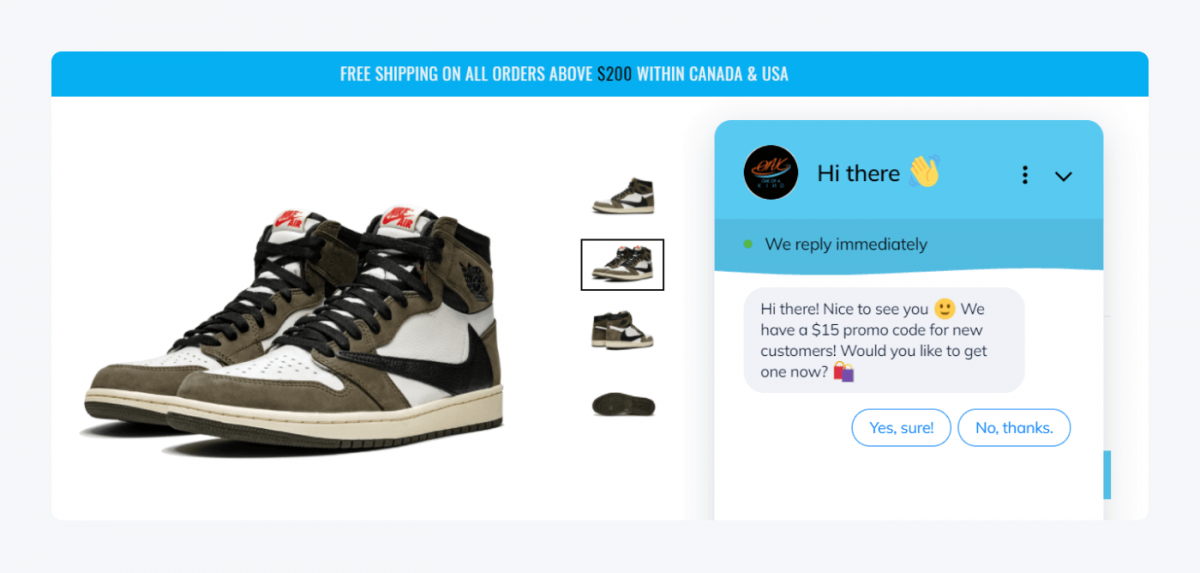
When a customer knows what they are looking for, it is just a matter of a small incentive to win them over. If they don’t know what to buy, you can also start chatting with them and recommend some products. Discounts are great to get new customers, but to get loyal customers you should approach them personally.
Sometimes, all it takes is asking customers some additional questions about what they are looking for.
Our potential users are very often complete newbies when it comes to the knowledge of our product. That is why they won't be able to ask the right questions. We sometimes 'ask' the questions for them and it turns out that our solution is exactly what they are after.

6. Interact with customers through 3rd party platforms & social media
Your business should be where your customers are. If they are sitting on Facebook, then you should take care of your Facebook business page. If they watch YouTube 3 hours per day, record and edit videos online. If they are tweeting, assign someone to respond to them on Twitter.
To effectively manage customer service on social media, businesses must use social media management tools to keep an eye open on mentions and respond in a proactive way.
Amazon is among the top three biggest companies in the world right now, but they have a dedicated team that handles proactive customer monitoring on Twitter. And you can see that they personalize their comments and make them feel like genuine conversations.
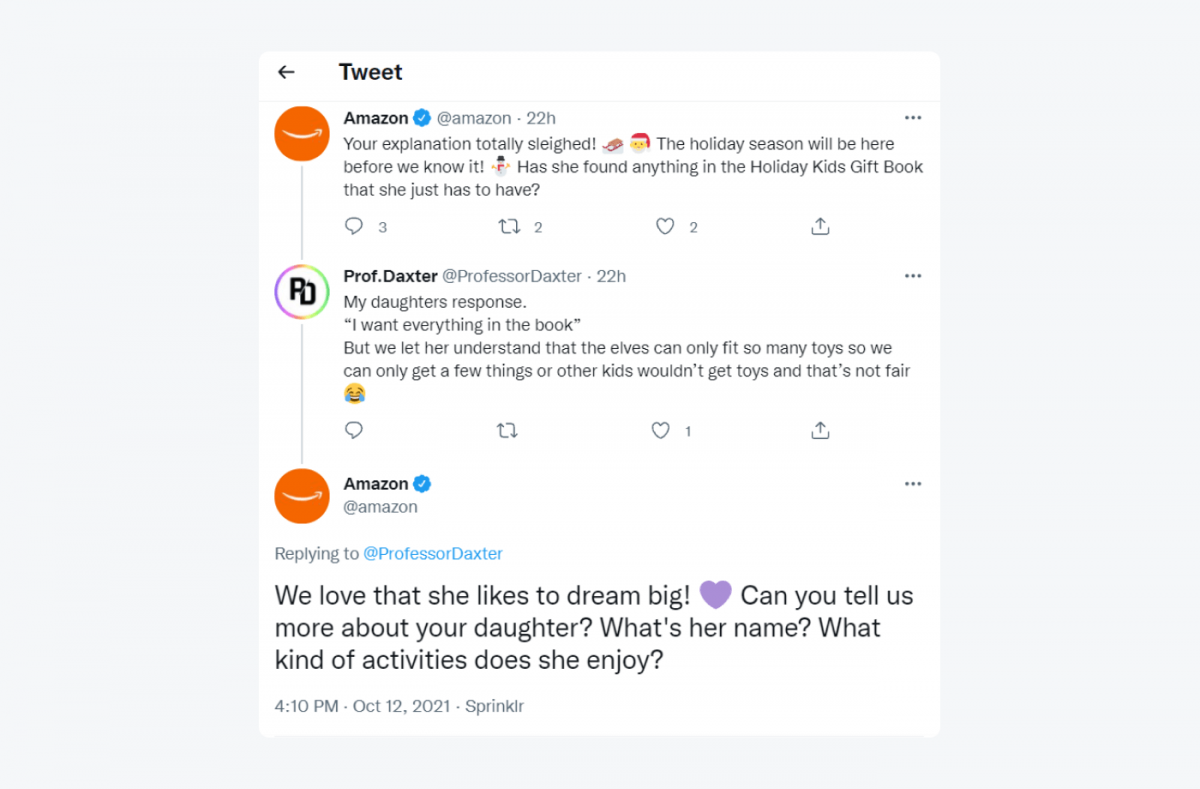
Being active on forums, LinkedIn, Instagram, and other social media is essential. These channels also offer a natural setting to interact with your customers and be proactive.
Read more: Learn all about proactive live chat, its benefits, and best use cases.
Key Takeaway
If you want to compete with successful businesses, then you should implement a proactive customer service approach in your business. It is probably high time to introduce proactive help solutions such as interactive knowledge bases and chatbots that solve your customers’ issues.
Why is proactive customer service important? Because it helps you get more customers, saves their time, and increases customer retention.
It doesn’t matter whether you want to focus on quality self-help resources or direct contact. Both ways require using the right customer service software. If you are interested in an all-in-one solution, you can start with Tidio.
